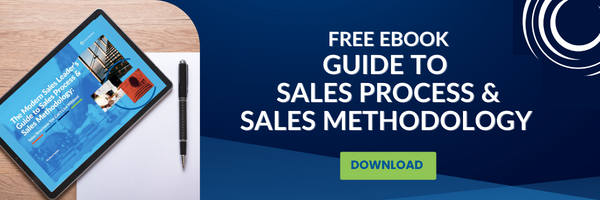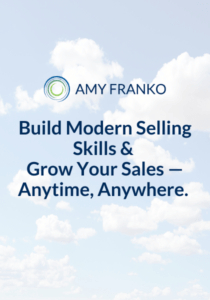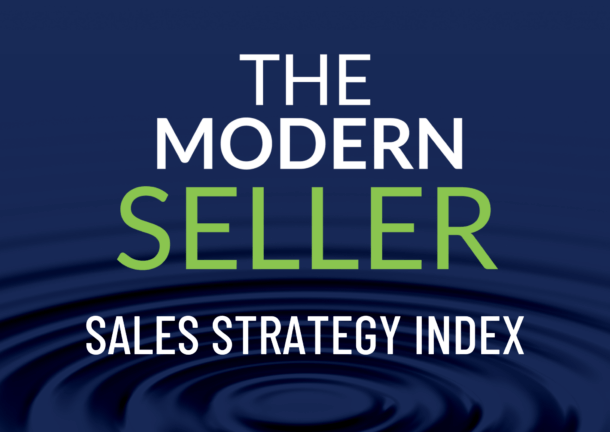"*" indicates required fields
Your sales team and your customers are operating in a new environment, one that will likely never fully return to what it was. New mindsets and approaches are needed to master selling in disruptive times.
Mastering these new mindsets and approaches will give your sellers and organization a competitive advantage. This is where your role as a sales leader becomes even more important. How do you pivot and then advise and coach your teams to success—to better serve your customers and further grow your organization? The answer lies in sales enablement.
Very simply, sales enablement is helping your team sell more efficiently and more effectively. The pillars of enablement include both tangibles and intangibles: the culture of your overall organization and the sales team, training, resources available, content available, overall sales strategy, and the sales processes or framework that is in place. According to HubSpot research, 59% of sales leaders have a dedicated sales enablement team.
5 practical ways to integrate sales enablement for you and your team
1. Start with a solid sales methodology for sales enablement.
Sales methodology lays the groundwork for sales enablement. There are a variety of tools you can choose from – like strategy, tactics, and skills – to help you at any given time. They are designed to support your sales process and don’t necessarily follow a specific step-by-step pattern. Some examples could include mapping your client’s buying process, your approach to solutioning a sales proposal, sales discovery conversations, or determining the right decision makers then strategizing on how to build relationships. These all support a successful sales outcome, but you may draw on them at different times.
A sales training methodology will give you both the structure and the flexibility you need to create successful sales outcomes. In my experience, there are five key categories that will help your sales teams win more consistently and at higher value—sales mindset, advisory intelligence, strategic relationships, compelling proposals, and key commitments. These categories are part of the curriculum design of our flagship sales training program, Strategic Selling for Professional Services.
2. Know your most important sales metrics.
Is your sales team performing well? You will never know unless you track your most important sales metrics. However, as I consult with organizations, I’ve discovered far too many that don’t take this important step in sales enablement.
Sales metrics can include the quality of opportunities in your pipeline, quantity of opportunities, opportunity win rate, length of your sales cycle (are they getting stuck?), deal size, and the cost of sale to revenue ratio. For example, revenue is important, but don’t forget to look at the margins and profits for the deals you close.
Knowing your sales metrics will give you a competitive edge.
3. Apply supply chain thinking for sales enablement.
Whether you’re selling for a blue-chip Fortune 500 company or a startup, you’ll benefit from a mix of enterprise and entrepreneurial selling approaches. Supply chain thinking helps sellers see how everything is connected– your customers, prospects, and partners.
One place to start with sales enablement is a map of your end-to-end sales process. Do you and your sellers understand the connectivity in their territories? And do you have the processes in place to help reinforce that connectivity?
Take a current prospect or very recent opportunity, and while it’s fresh map out each interaction point along the way.
Look at prospecting touches and methods, how you qualified it, the buying roles involved, which internal teams and external partners are participating, and what demos or presentations you’ve conducted to date. Don’t leave anything out.
This exercise will show you valuable data points, plus an honest picture of your sales activities and their outcomes.
With a full picture of your real-life sales process, you can align it to your formal selling process, and more importantly, to how your customers buy. When you work this way, you’ll build a structure of support, plus have the agility to pivot, stay relevant, and differentiate yourself. That translates into more wins, more top-tier clients, and a highly profitable territory.
4. Develop strategic speed.
Strategic speed is what helps us move toward a goal, at pace that creates both short-term and long-term value. It can apply to almost any situation: achieving a goal, moving a customer opportunity forward, building a target market, launching a new product or service, or building a new skill.
To apply this concept, think of a goal or objective you’re looking to accomplish over the next 6 to 12 months. First, define the potential results and benefits—both short term and long term. A focus on only the short term could result in speed, but might have fallout because of a lack of long-term direction. A focus on only the long term could cause you to move too slowly and not create enough momentum to accomplish the goal.
Next, look for alignment between the short-term and long-term list. Where can achieving a short-term result also contribute to long-term success? It’s in that alignment where you attain strategic speed. A short-term win and long-term progress.
From there, prioritize your next steps, and additional resources you need.
5. Use a data-driven approach to sales team assessment.
Successful sales leaders take time to uncover the gaps in their organizations and build sales development processes. Rather than relying on intuition, data-driven assessment will study your team’s productivity and performance so you can truly understand their competencies. It also gives you the opportunity to stop and consider if you have the right people in the right roles with the right skills to get you where you need to go as a business.
By conducting an evaluation before you launch your new sales training initiative, you’ll know what type of sales training to invest in rather than guessing what might work.
To get started with sales enablement, choose one or two of the ways to integrate enablement that makes the most sense for you or your sales team. Consistently implement the sales enablement strategies over the next quarter, and you’ll have a strong kickstart to the second half of the year.
Are You Ready to Create a Winning Sales Enablement Program?
And if you’re a sales leader who needs help assessing your team’s skills, strengths, challenges, and opportunities, let’s chat. Fill out this form, and request a free 30-minute consultation call with me.
This article was originally written in 2021 and updated in July 2023.



 Our Strategic Selling signature sales training program is now available online. This online sales learning program is ideal for professional services and B2B sales. Get started with 2 free lessons.
Our Strategic Selling signature sales training program is now available online. This online sales learning program is ideal for professional services and B2B sales. Get started with 2 free lessons.